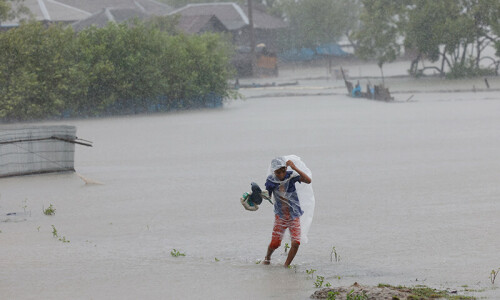
WASHINGTON: Nato is investigating if the roadside bomb that penetrated an armored vehicle and killed six US troops at the weekend was a new type of device or just contained more explosives than normal.
Nato's International Security Assistance Force was “still looking at this incident,” Pentagon press secretary George Little told reporters. “We're waiting for their conclusions to come in,” he said.
The death toll from the bombing in eastern Wardak province was the highest for a single incident among American forces since a helicopter crash on January 19, when six troops were killed.
The casualties were unusually high for a roadside bombing attack and officials said it was too soon to say whether the explosive was more sophisticated than the typically crude devices planted by the Taliban, which use ammonium nitrate fertilizer.
Initial indications suggested the bomb was packed with a large amount of explosives but did not reflect a more advanced design, said spokesman Captain John Kirby.
“Right now things are looking like it's more just the amount of explosive material more than the type,” Kirby told the same press conference. Asked if the Pentagon could exclude the possibility of a more advanced Iranian-made bomb, an explosively formed penetrator (EFP), used with devastating effect in Iraq, Kirby said: “We’re not ruling anything in or out right now.”
The troops killed Sunday were riding in a Mine Resistant Ambush Protected (MRAP) vehicle, which have V-shaped hulls designed to withstand homemade bombs.
The MRAPs have been deployed to Afghanistan in large numbers and have been credited with reducing casualties from roadside explosives.
Homemade bombs killed at least 84 American troops so far this year, accounting for nearly half of all US losses in the war, according to icasualties.org, an independent website that keeps a running tally of the death toll from the conflict.
The US military says that better equipment and intelligence has reduced the effect of the homemade bombs, or improvised explosive devices, compared to earlier in the war.













































Dear visitor, the comments section is undergoing an overhaul and will return soon.